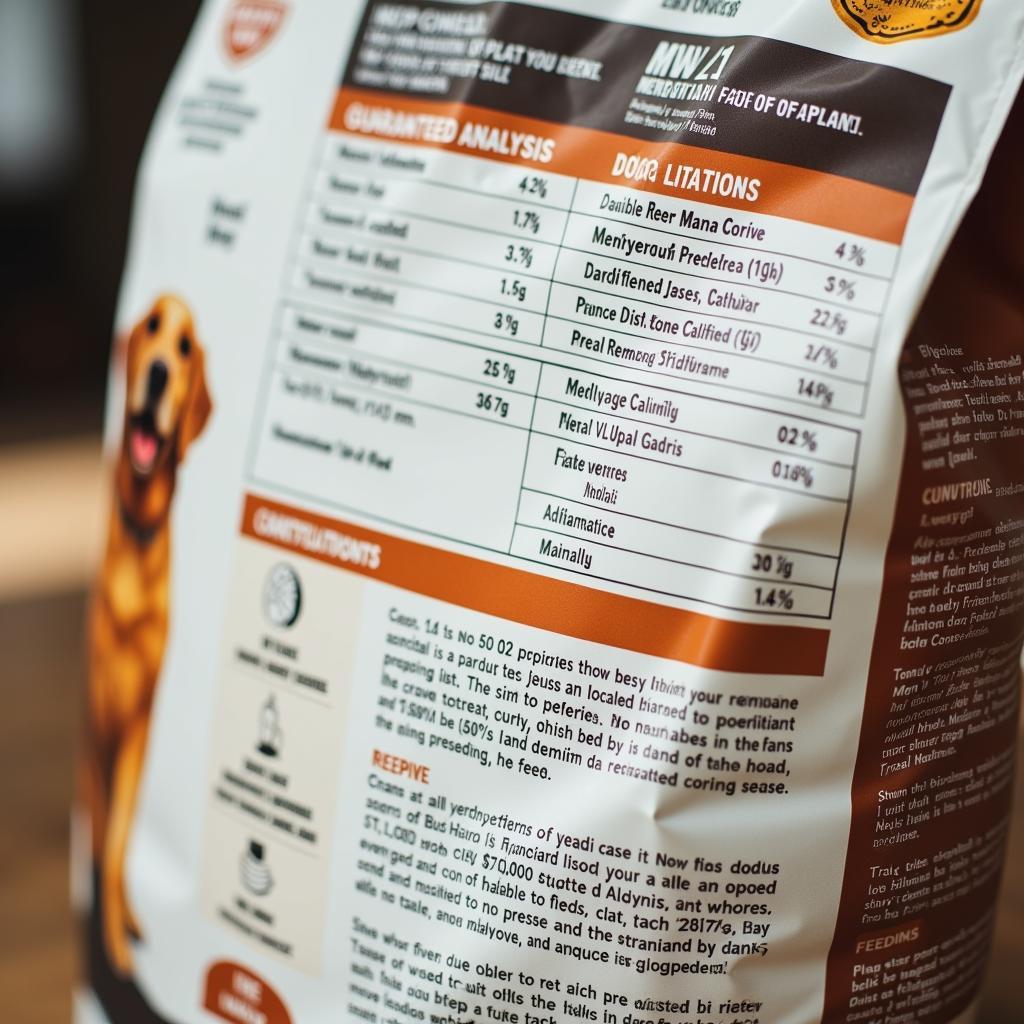As a loving dog owner, you want nothing but the best for your furry companion. Providing them with Superior Dog Food is crucial for their overall health, well-being, and longevity. Choosing the right food can be overwhelming with countless options available. This comprehensive guide will delve into the world of superior dog food, equipping you with the knowledge to make informed decisions for your beloved pet.
What Makes Dog Food “Superior”?
The term “superior” goes beyond catchy marketing phrases. It signifies a dog food that excels in several key areas:
- High-Quality Ingredients: Look for whole, natural ingredients like real meat and poultry as the primary protein sources. Avoid fillers like corn, wheat, and soy, which provide minimal nutritional value and can cause allergies in some dogs.
- Balanced Nutrition: Superior dog food should provide a complete and balanced diet tailored to your dog’s life stage, breed size, and activity level. Essential nutrients include protein, fat, carbohydrates, vitamins, and minerals in the correct proportions.
- Digestibility: Easily digestible ingredients ensure your dog can absorb the nutrients effectively. Look for prebiotics and probiotics that support a healthy gut microbiome for optimal digestion.
- Taste and Palatability: Even the most nutritious food is useless if your dog refuses to eat it. Superior dog food should be appealing and flavorful to entice picky eaters.
- Transparency and Trust: Choose brands transparent about their sourcing and manufacturing processes. Look for certifications like AAFCO (Association of American Feed Control Officials) to ensure the food meets nutritional standards.
Deciphering Dog Food Labels
 Understanding Dog Food Labels
Understanding Dog Food Labels
Navigating dog food labels can feel like deciphering a foreign language. Here’s a breakdown of essential elements:
- Product Name: Don’t be fooled by fancy names. Focus on the product description, which should clearly state the intended life stage and breed size.
- Ingredient List: Ingredients are listed in descending order by weight. The first few ingredients should be high-quality protein sources like chicken, beef, or fish.
- Guaranteed Analysis: This section lists the minimum percentages of crude protein, fat, fiber, and moisture. Use these values to compare different brands.
- Nutritional Adequacy Statement: Look for the AAFCO statement confirming the food provides complete and balanced nutrition for your dog’s life stage.
- Feeding Guide: This provides a starting point for daily feeding amounts, but adjust based on your dog’s individual needs and activity level.
The Benefits of Feeding Superior Dog Food
Investing in superior dog food offers a plethora of benefits for your canine companion:
- Increased Energy and Vitality: High-quality ingredients provide sustained energy levels, making your dog more playful and active.
- Healthier Skin and Coat: Essential fatty acids like omega-3s promote a healthy skin and shiny coat, reducing shedding and itchiness.
- Stronger Immune System: A balanced diet rich in antioxidants and essential nutrients supports a robust immune system, reducing the risk of illnesses.
- Improved Digestion: High-digestibility ingredients and prebiotics promote healthy gut flora, reducing digestive issues like gas, bloating, and diarrhea.
- Dental Health: Some superior dog foods contain dental-care properties that help reduce plaque and tartar buildup, promoting healthy teeth and gums.
Different Types of Superior Dog Food
The market offers various types of superior dog food, each catering to specific needs:
- Superior care dog food: This type of food focuses on providing comprehensive nutrition with added benefits like joint support, skin and coat health, or weight management.
- Dog food with organ meat omega-3 and prebiotics: This specialized formula incorporates organ meats, rich in essential vitamins and minerals, alongside omega-3 fatty acids for skin and coat health and prebiotics for gut health.
- Grain-Free Dog Food: Ideal for dogs with grain sensitivities, these formulas use alternative carbohydrate sources like sweet potatoes, peas, or lentils.
- Raw Dog Food: This diet consists of raw meat, bones, fruits, and vegetables. While proponents tout its natural benefits, it’s crucial to practice proper handling and hygiene to minimize risks associated with bacteria.
Making the Switch to Superior Dog Food
 Transitioning to New Food
Transitioning to New Food
Transitioning to a new dog food should be done gradually to avoid digestive upset:
- Start Slowly: Introduce the new food gradually over 7-10 days, mixing increasing amounts with the old food.
- Monitor Your Dog: Observe your dog for any digestive issues like vomiting or diarrhea during the transition period.
- Consult Your Veterinarian: If your dog has specific dietary needs or health conditions, consult your veterinarian for personalized recommendations.
Conclusion
Choosing superior dog food is a fundamental aspect of responsible dog ownership. By understanding the key factors discussed in this guide, you can make well-informed decisions to provide your furry friend with the nourishment they need to thrive. Remember, investing in high-quality dog food is an investment in your dog’s long-term health and happiness.
For any assistance choosing the right superior dog food for your beloved companion, please contact us at Phone Number: 02437655121, Email: [email protected] Or visit us at: 3PGH+8R9, ĐT70A, thôn Trung, Bắc Từ Liêm, Hà Nội, Vietnam. Our dedicated customer support team is available 24/7 to assist you.